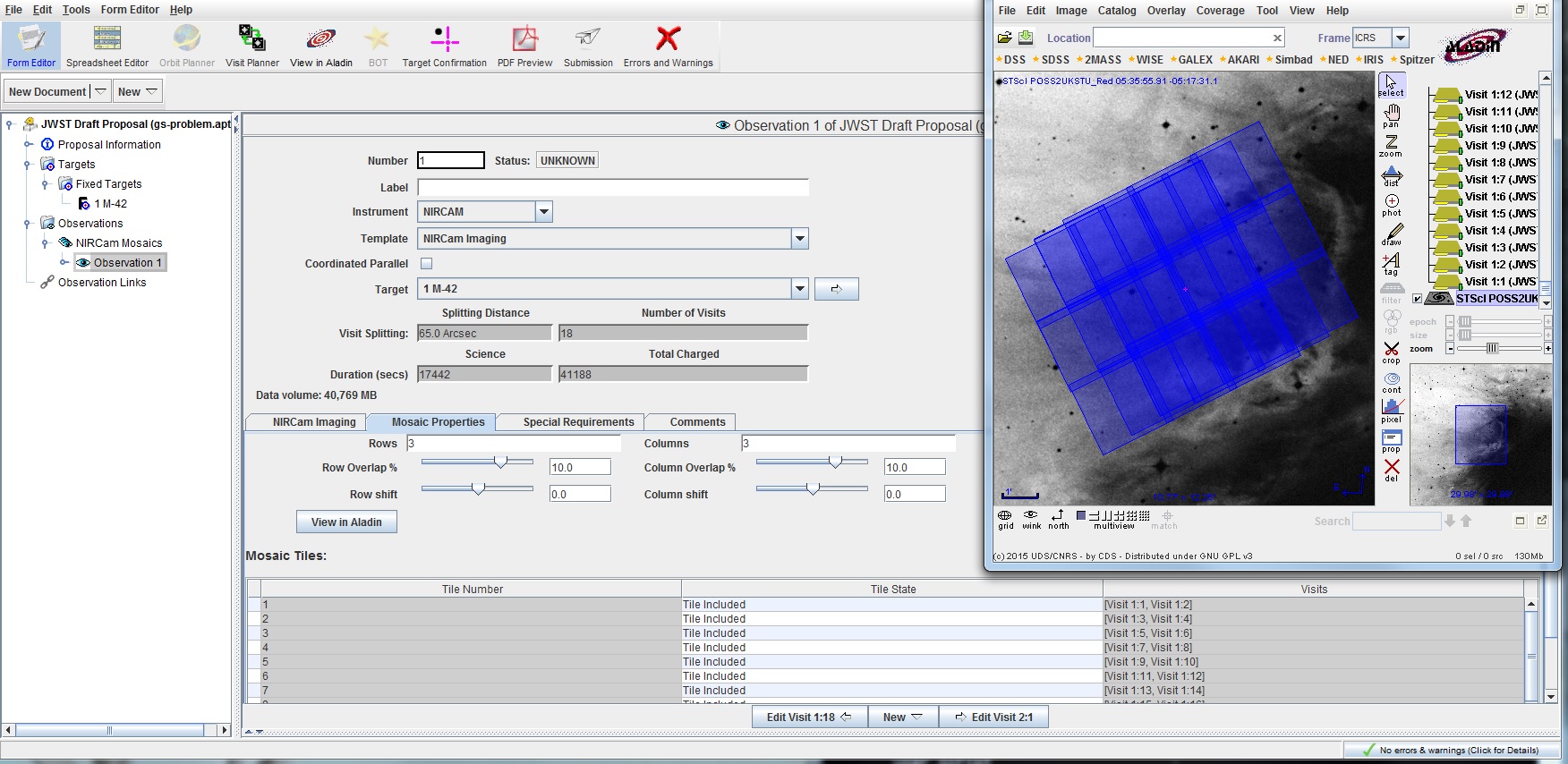
The project is to mosaic a star-forming region in the Orion
Nebula using NIRCam. We have defined a 3x3 mosaic, and since the
region is not symmetric, we have set a position angle (V3PA) of 27 degrees.

After running the ![]() Visit Planner,
we find that the mosaic is not schedulable. Looking at the individual
constraints, we see that the V3PA (labelled ABSOLUTE ORIENT in
the Visit Planner) is the reason (the V3PA is constrained in order to
keep the telescope properly positioned behind the sunshade).
Note that the
Visit Planner,
we find that the mosaic is not schedulable. Looking at the individual
constraints, we see that the V3PA (labelled ABSOLUTE ORIENT in
the Visit Planner) is the reason (the V3PA is constrained in order to
keep the telescope properly positioned behind the sunshade).
Note that the ![]() on the GROUP and SAME ORIENT constraints just indicate that since at
least one of the Visits is unschedulable, the ensemble is unschedulable.
on the GROUP and SAME ORIENT constraints just indicate that since at
least one of the Visits is unschedulable, the ensemble is unschedulable.
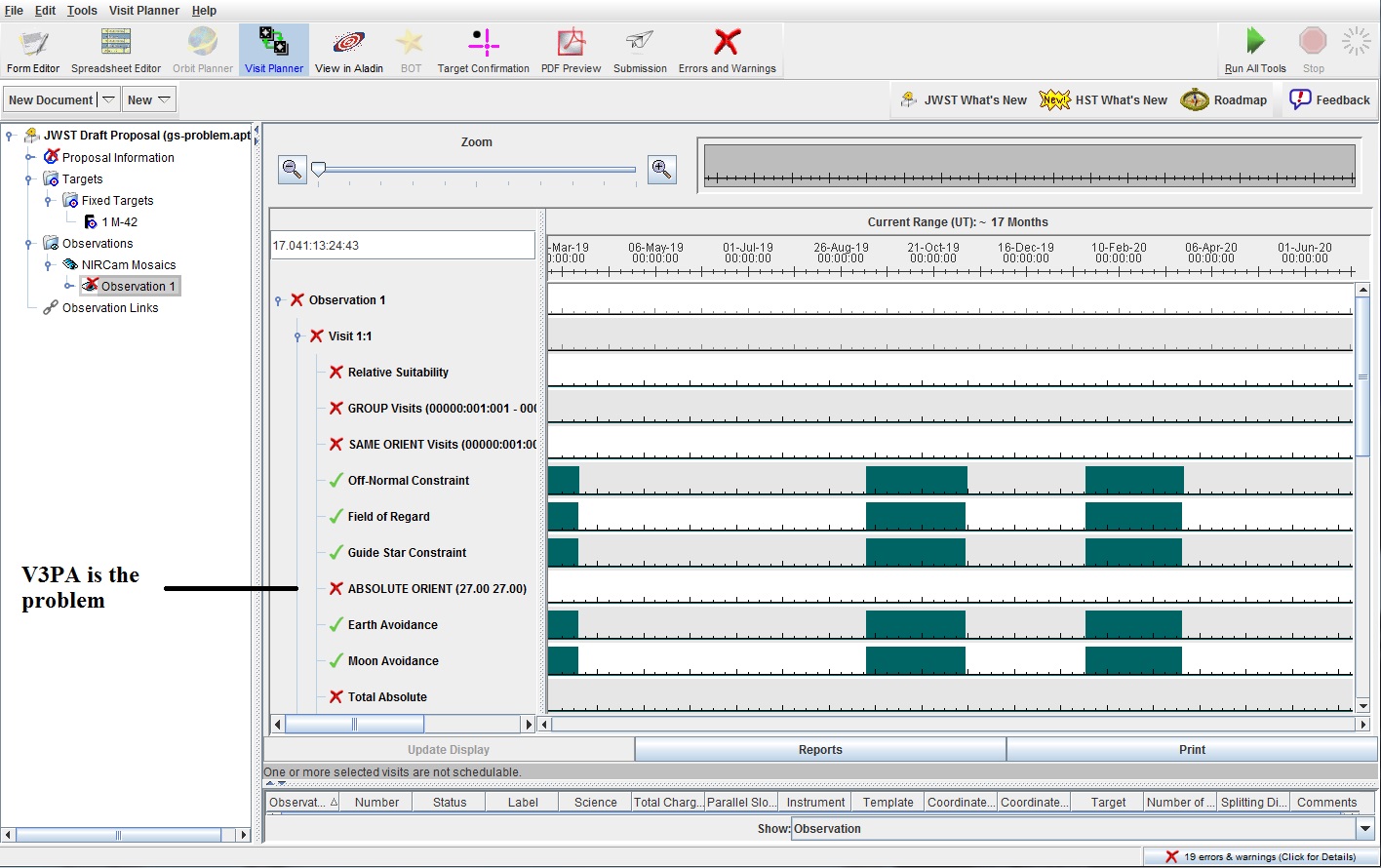
To determine the legal V3PA ranges,
we will make a copy of the mosaic with no V3PA value (or you can
just remove the constraint on the current Observation) and
run it through the ![]() Visit Planner.
We can then look at the Total Roll Analysis for a visit to see which
V3PA values are available. To access this report, you can either
right-click on a Visit or click on the Reports button, select a visit,
and select the report.
Visit Planner.
We can then look at the Total Roll Analysis for a visit to see which
V3PA values are available. To access this report, you can either
right-click on a Visit or click on the Reports button, select a visit,
and select the report.
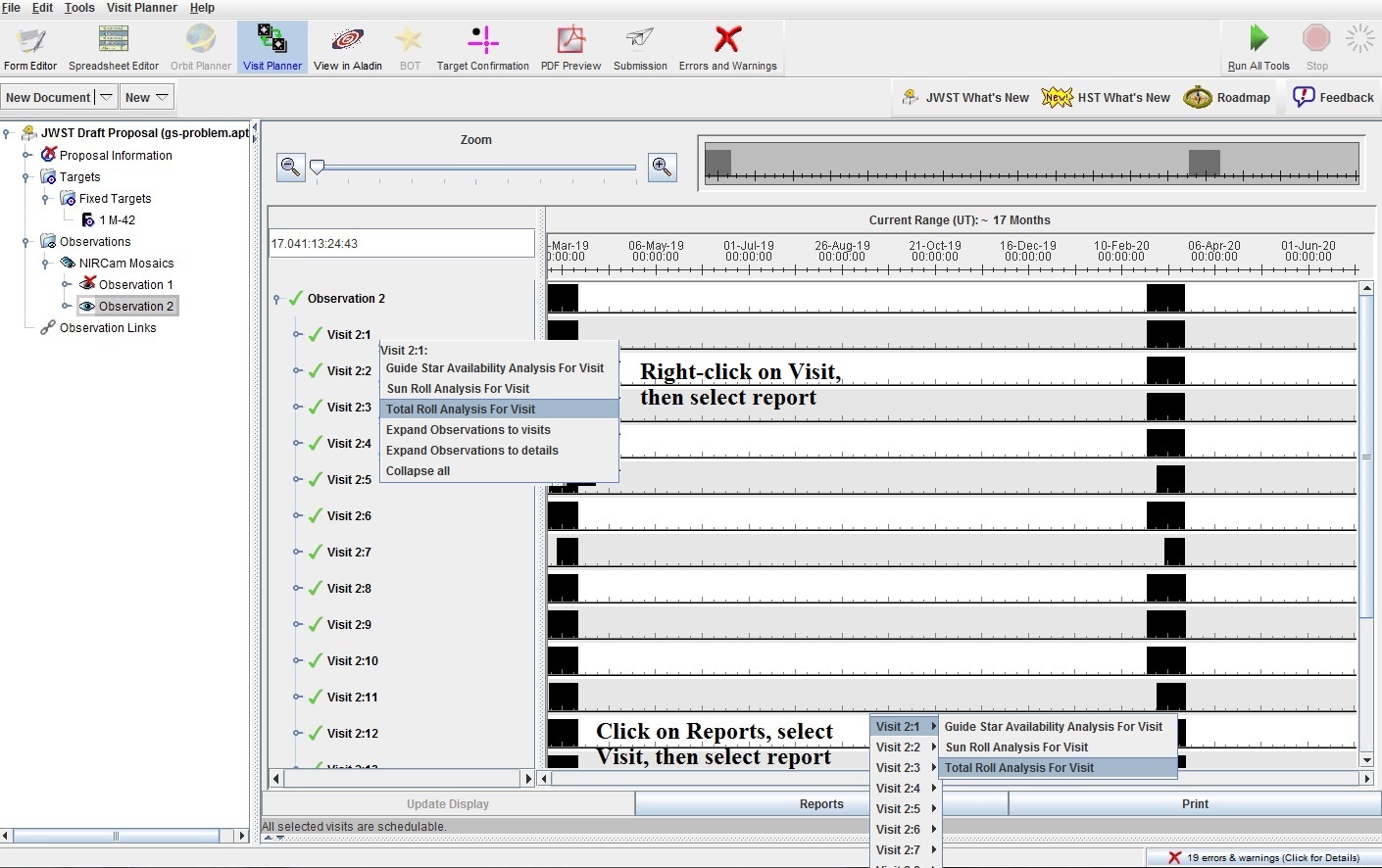
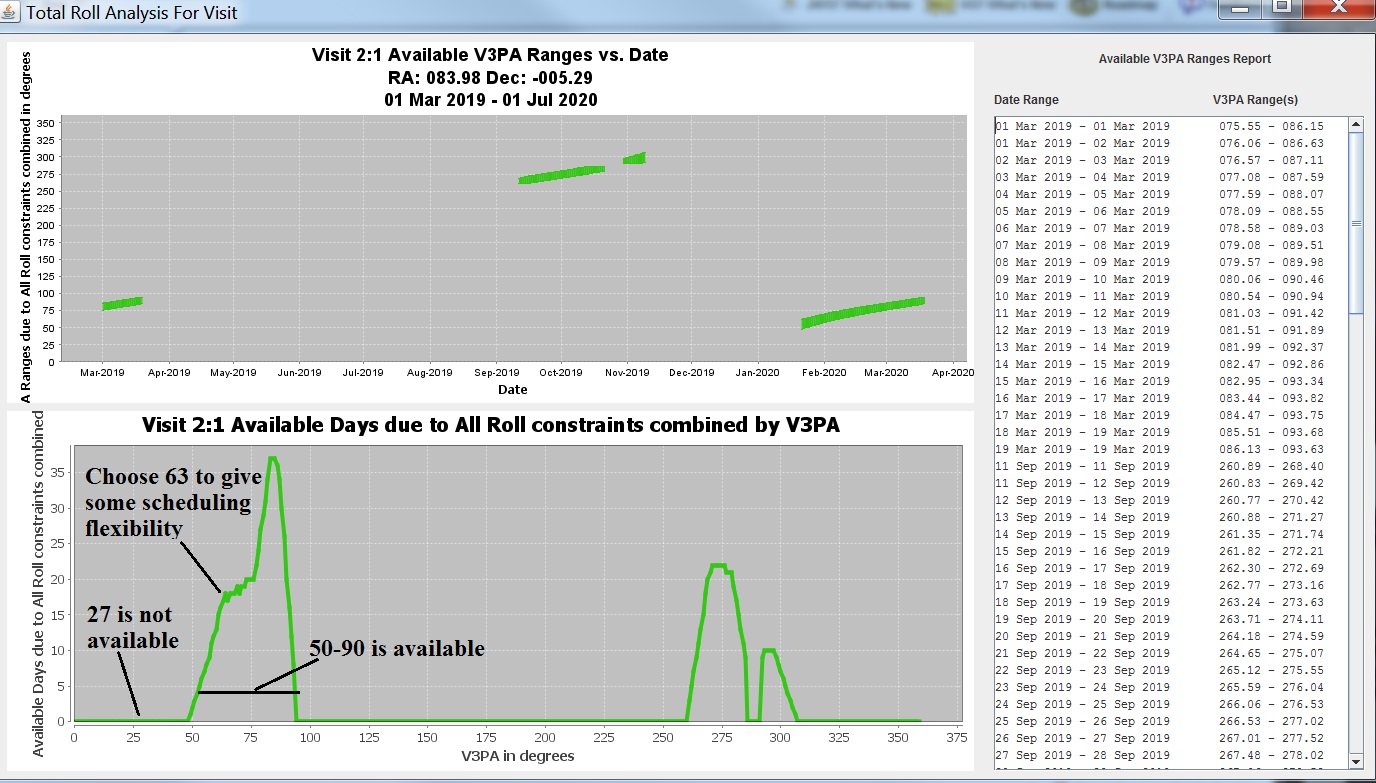
The report shows that our desired value of 27 degrees is not
available. While the range 50-90 is available, we will choose
63 degrees to allow some scheduling flexibility (i.e. a
reasonable number of days that the V3PA value is available).
Despite the fact that 63 degrees is far from our preferred choice,
it still gives us good coverage for the mosaic.

Rerunning the ![]() Visit Planner,
we find that the mosaic is still not schedulable. In this case, it
is the GROUP and SAME ORIENT constraints that are the problem, which
indicates that 1 (or more) visits are unschedulable, likely due to lack of
Guide Stars. To check this, we need to look at the Guide Star
Availability by V3PA report, which is accessed by right-clicking on
the Observation (not a Visit).
Visit Planner,
we find that the mosaic is still not schedulable. In this case, it
is the GROUP and SAME ORIENT constraints that are the problem, which
indicates that 1 (or more) visits are unschedulable, likely due to lack of
Guide Stars. To check this, we need to look at the Guide Star
Availability by V3PA report, which is accessed by right-clicking on
the Observation (not a Visit).
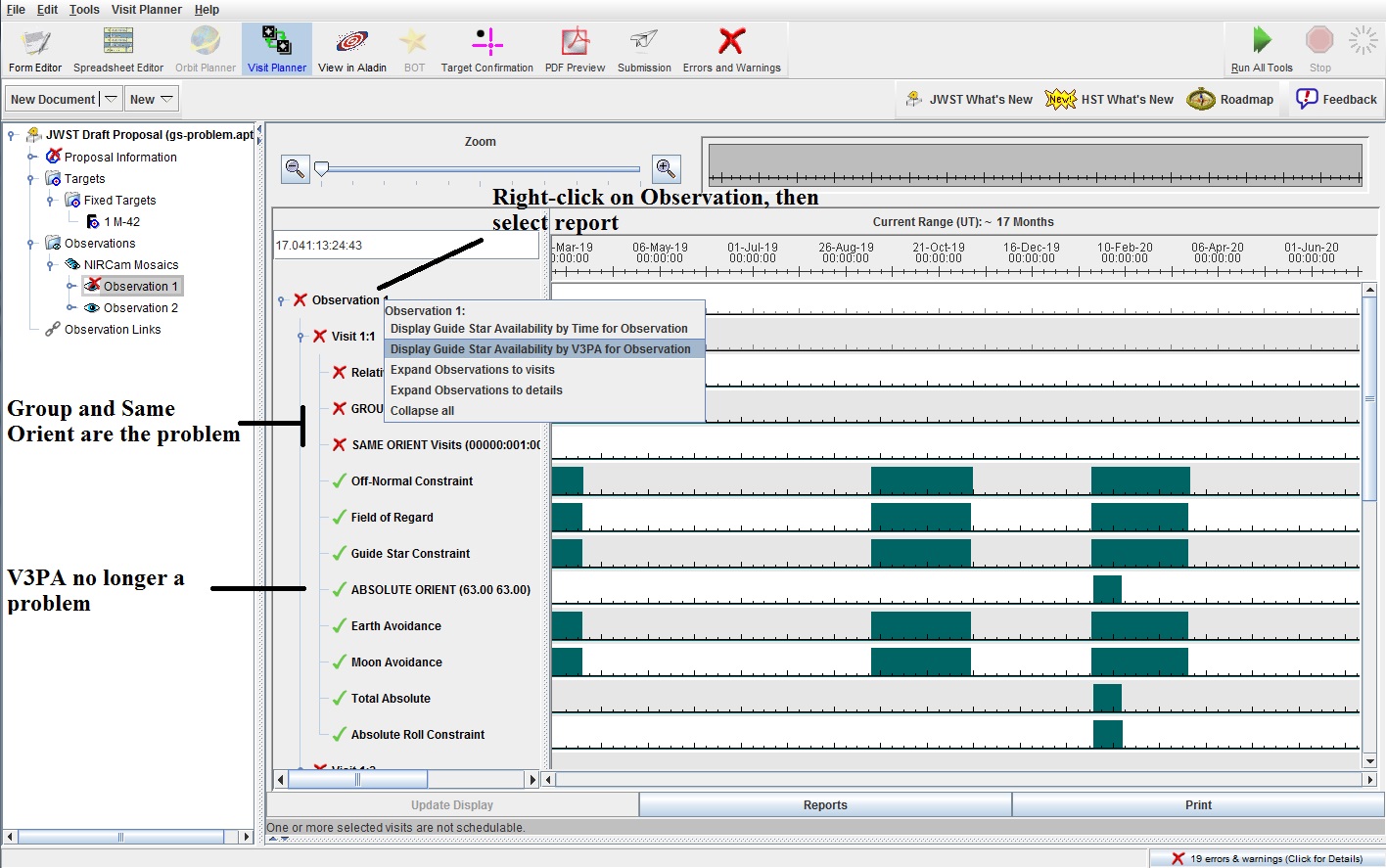
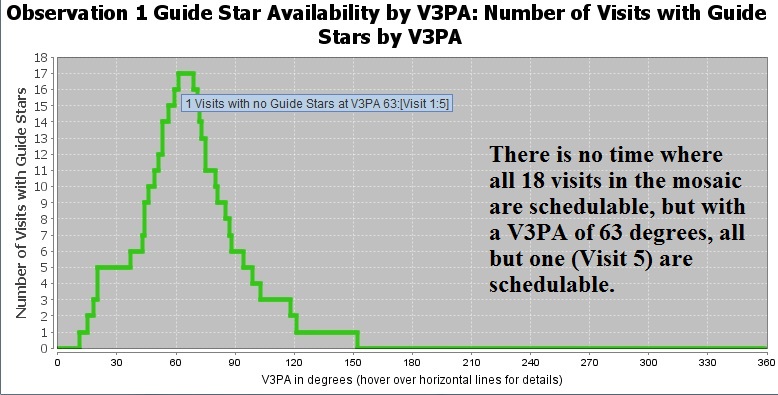
This report shows the number of visits with Guide Stars for each
V3PA value; note that the report is just providing Guide Star
information, so shows all V3PA values, not just those that are
actually available. Hovering the cursor on a portion of
the graph shows which
visits have no Guide Stars (in this case, Visit 5 has no Guide
Stars). If we look at that Visit in the
![]() Visit Planner, we confirm
that that is the problem.
Visit Planner, we confirm
that that is the problem.
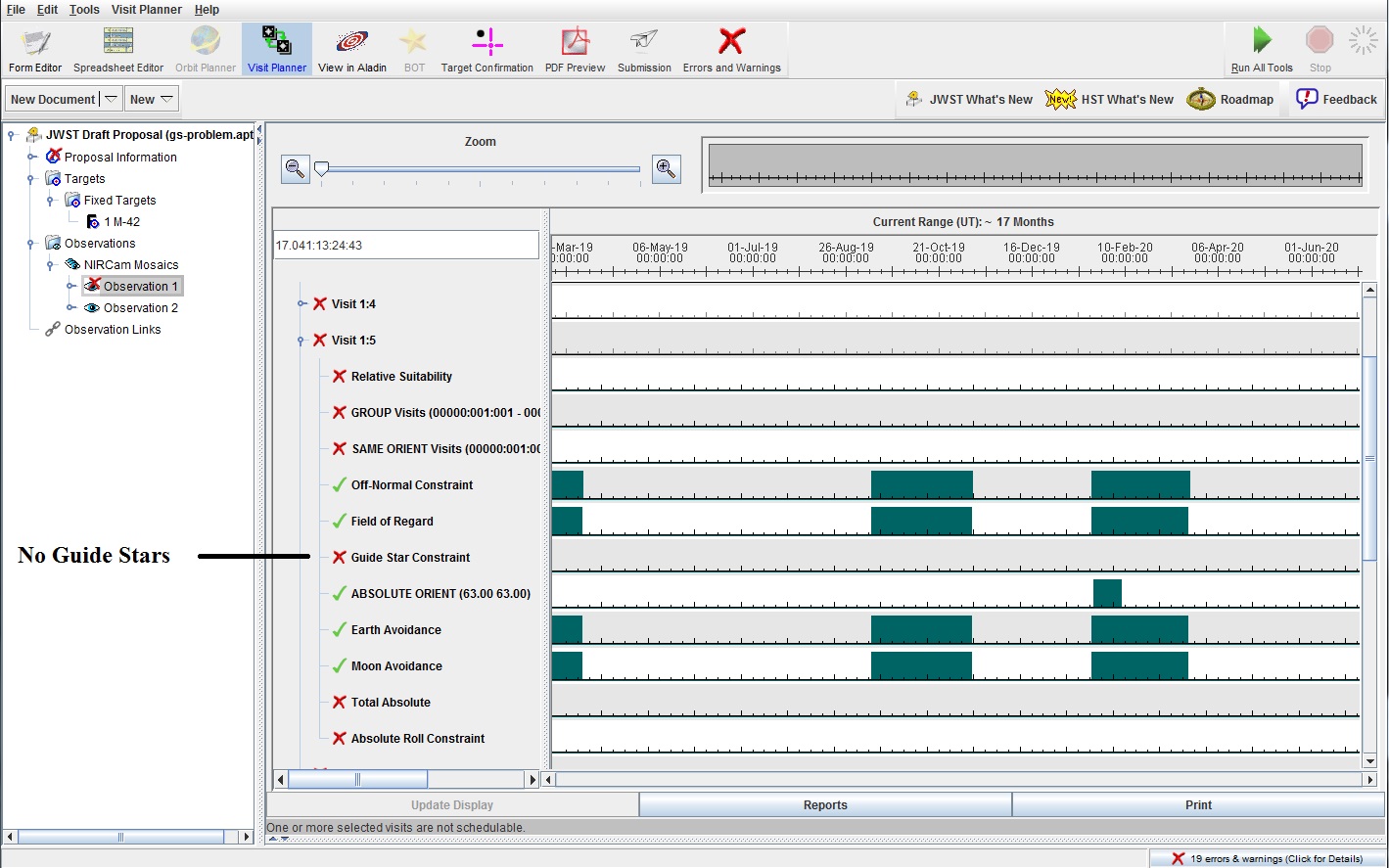
To resolve this problem, we have 3 possible options. First, if there
is a V3PA value that does have all 18 tiles with Guide Stars, we could
change to that V3PA; that option is not available in this case. Second,
if the bad tile was not scientifically important, we could remove it.
In this case, the tile is scientifically important, so must be maintained.
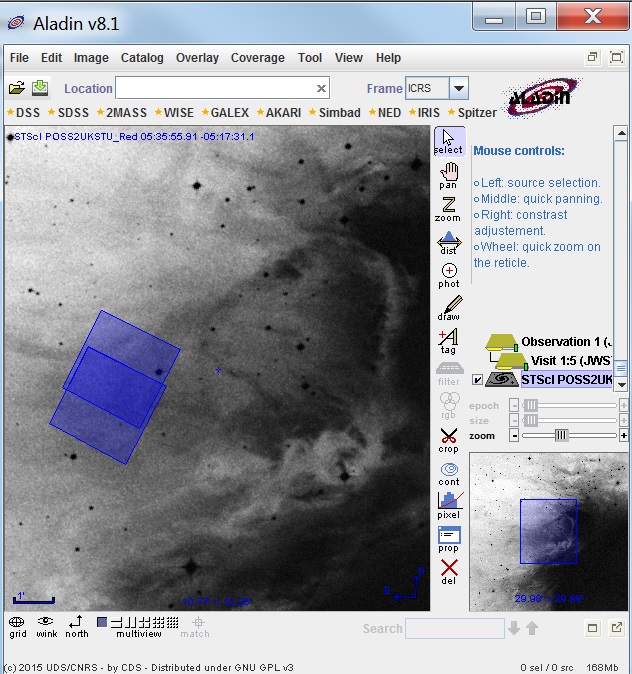
The third option is to Split the tile from the mosaic into its own
Observation and obtain the data at a different V3PA. Note that when
you split (or copy or insert) a tile, the mosaic MUST be defined with
an exact position angle. When you split the tile
(which may takes several seconds),
APT creates a new Mosaic Group folder, and places the original
mosaic and the new split tile into that folder (the purpose of
the special Observation folder is to keep both the main mosaic
and the split tile together to support processing in the Archive).
APT also creates a new fixed target at the position of the split tile.

If we now rerun the ![]() Visit
Planner on the modified mosaic, we see that it is now schedulable.
Visit
Planner on the modified mosaic, we see that it is now schedulable.
For the split tile, we know that the V3PA range from 50-90 is schedulable.
Putting in that range, running the
![]() Visit
Planner, and then looking at
the Guide Star Availability by V3PA report, we see that there are guide
stars from V3PA = 38-58 degrees. Since 58 is closest to the rest of
the mosaic, we choose that value.
Visit
Planner, and then looking at
the Guide Star Availability by V3PA report, we see that there are guide
stars from V3PA = 38-58 degrees. Since 58 is closest to the rest of
the mosaic, we choose that value.
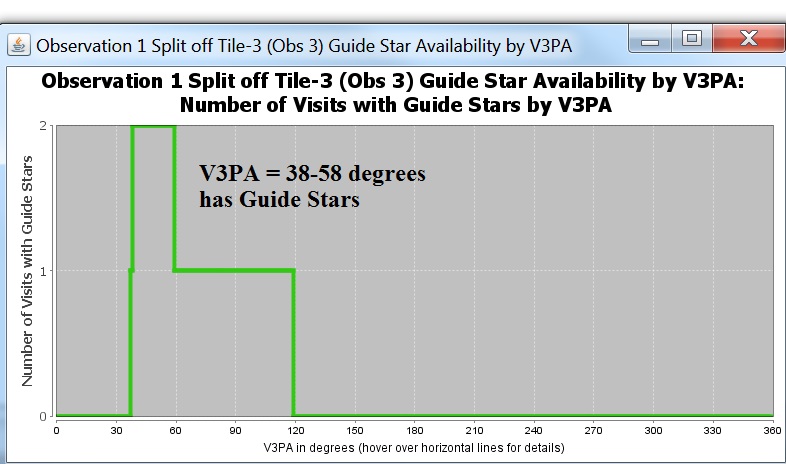
To verify that this V3PA for the split is scientifically valid, select
the Observation Mosaic Group (which allows you to see both the main
mosaic and the split tile together) and display it in Aladin.

Rerunning the
![]() Visit Planner shows
that this Observation is now schedulable.
Visit Planner shows
that this Observation is now schedulable.